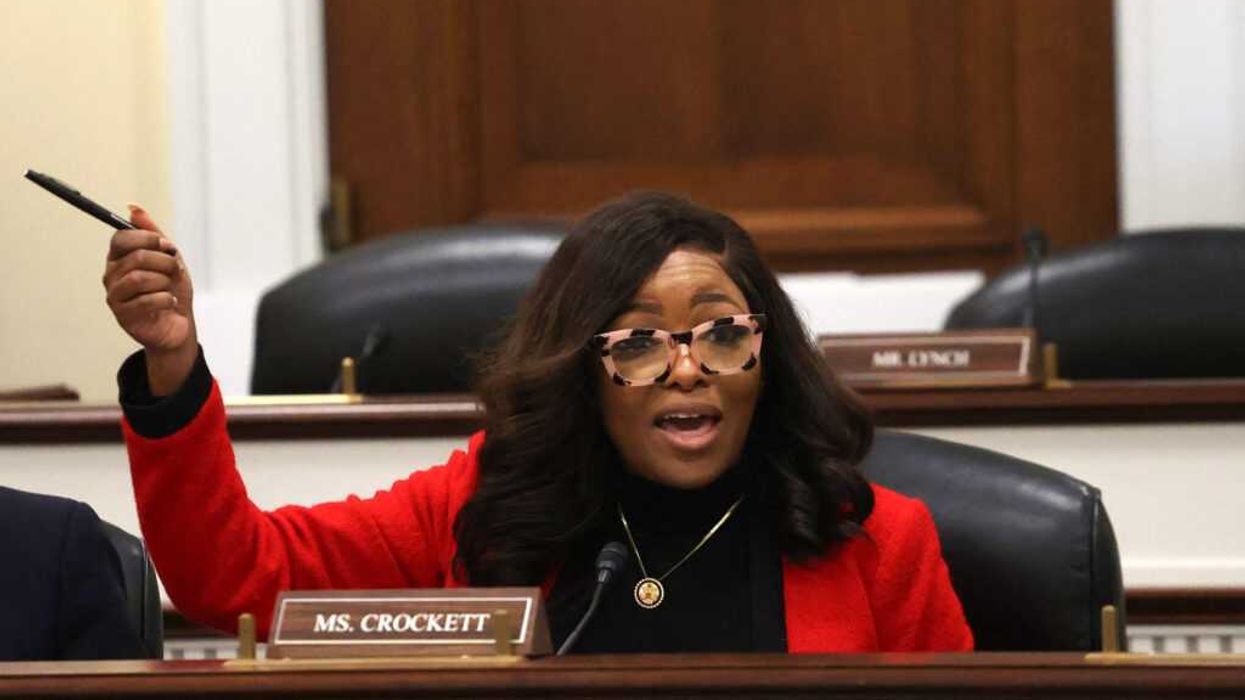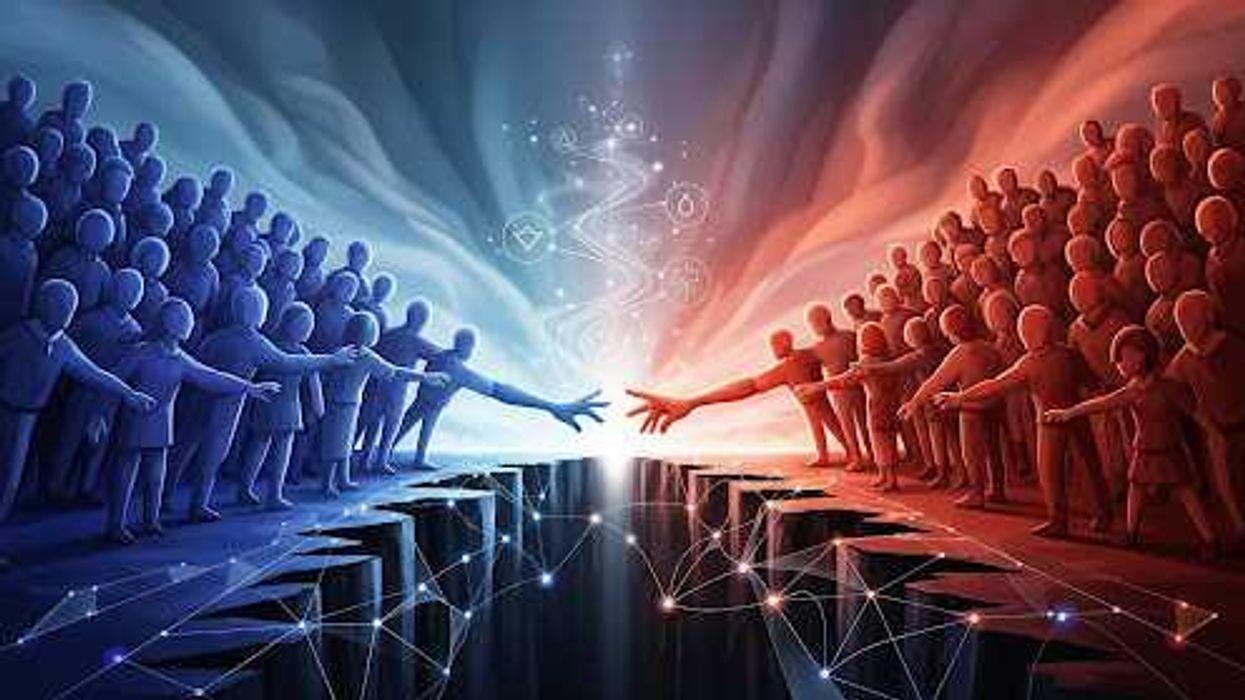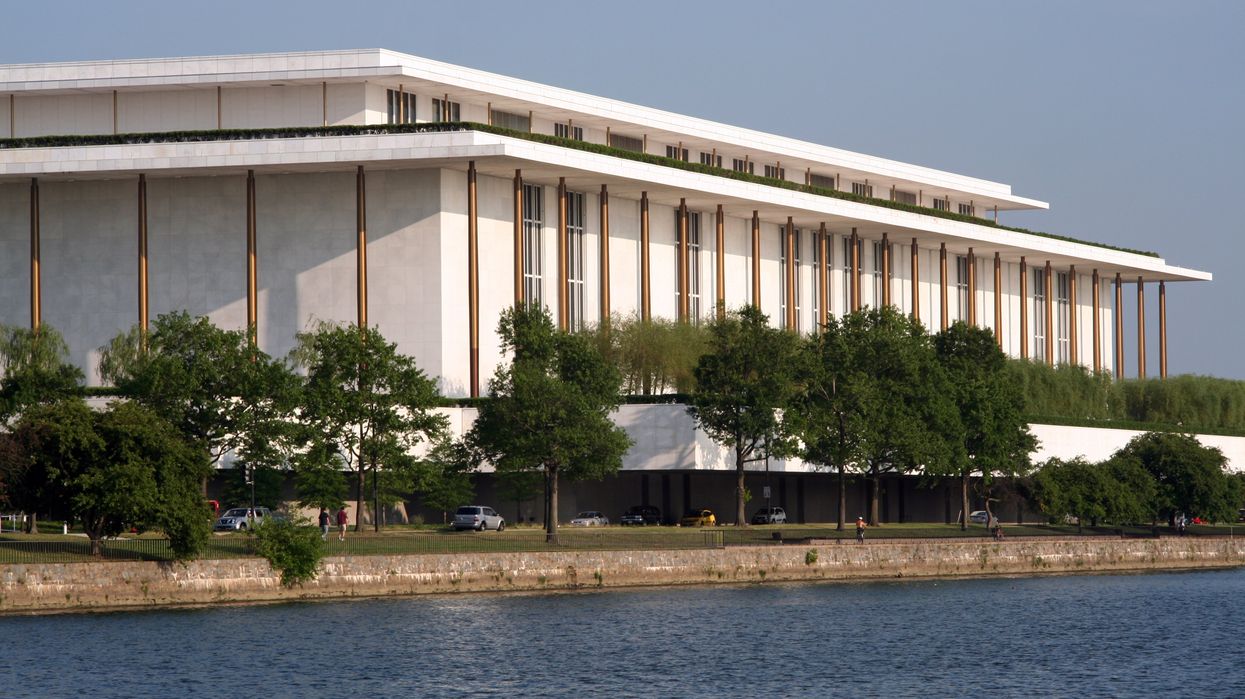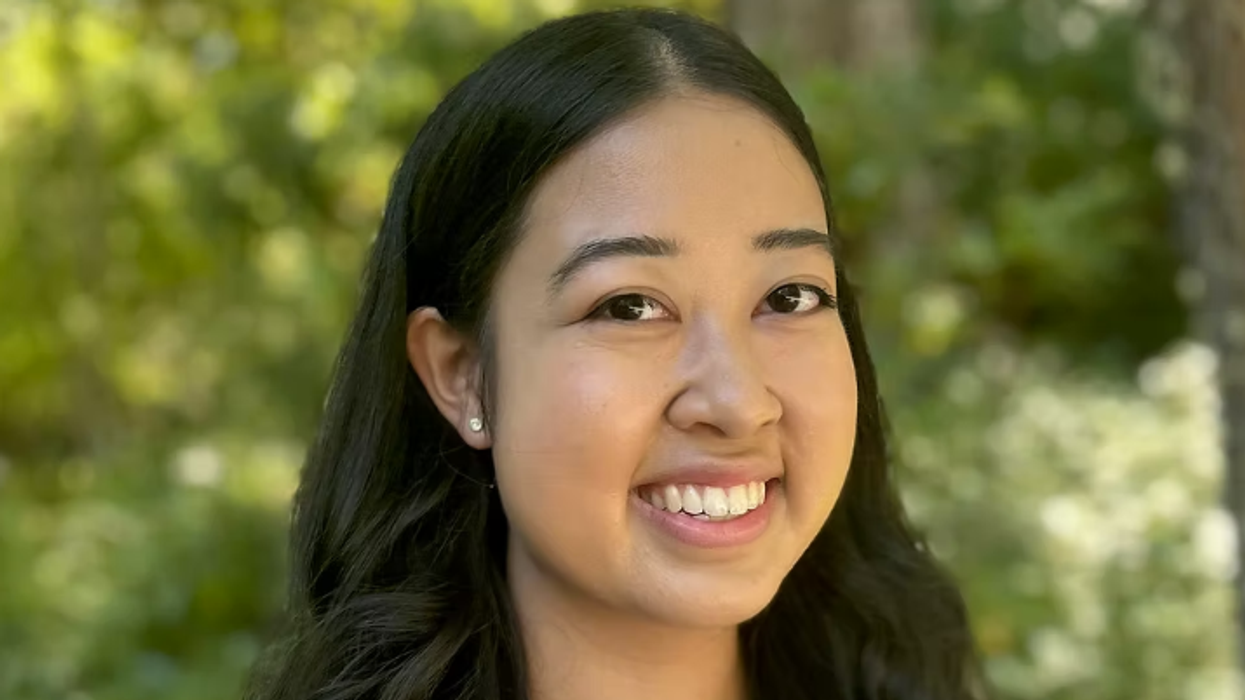With politics as polarized and divisive as ever and the holiday season approaching, many of us will have difficult interactions with problematic family members. Does calling out your problematic family members benefit you or our political climate? Or does it do the opposite -- worsening familial relationships and political climate?
Site Navigation
Search
Latest Stories
Start your day right!
Get latest updates and insights delivered to your inbox.
Top Stories
Latest news
Read More

US Rep. Jasmine Crockett (D-Texas) speaks during an "Oversight and Government Reform" hearing on Capitol Hill, in Washington, D.C., on Feb. 12, 2025. (Alex Wroblewski/AFP/Getty Images/TNS)
(Alex Wroblewski/AFP/Getty Images/TNS)
Does either party actually want to win the Senate race in Texas?
Jan 03, 2026
One of the worst features of the election primary system in our polarized “Red vs. Blue” time is the tendency of primary voters to flock to the candidate they most want to “destroy” the other party, not the candidate best positioned to do so.
Let’s say a zombie is scratching at your door. You’ve got a shotgun, a handgun and your favorite frying pan. The shotgun has the greatest chance of success, the handgun — if one is careful and skilled — has a solid chance of working, and the frying pan? It probably won’t dispatch the threat but, come on, how cool would it be to take out a zombie with a frying pan? So, you go with that.
In this extended metaphor, Texas Rep. Jasmine Crockett is the Democrats’ frying pan and Attorney General Ken Paxton is the Republican one.
Given trends in media coverage, you’re probably more familiar with examples of this phenomenon from the GOP. Remember Christine O’Donnell, the sketchy Delaware Senate candidate who had to run an ad in 2010 assuring voters, “I’m not a witch.” Or Todd Akin, the 2012 Missouri senate candidate who got into trouble for insisting that women don’t get pregnant in cases of “legitimate rape.” More recently, there was Mark Robinson, the 2024 North Carolina lieutenant governor who dabbled in Holocaust denial and mocked school-shooting survivors as “spoiled little bastards.” Only after he got the nomination was it revealed that he described himself as a “black NAZI” on a porn site.
Democrats have a similar, if less colorful, problem. In a bunch of races, Democrat primary voters preferred the candidate who was more ideologically pure, more pugnacious, or — in the President Trump era — the most committed to “resistance.” Once nominated, they were ill-suited to appeal to swing voters in a general election.
Just a few examples of Democratic candidates who excited the base but not mainstream voters: Mandela Barnes, the very progressive Wisconsin Senate candidate in 2022; Kara Eastman, the preferred candidate of “Justice Democrats” in Nebraska’s second district House race in 2018; Stacey Abrams, the election-denying two-time candidate for Georgia governor; and Andrew Gillum, the Florida progressive underdog who beat out more centrist candidates to get the Democrats’ nomination for governor, only to lose narrowly to Ron DeSantis in 2018.
Some of these races were indeed close. But the populist left and populist right take the wrong lesson from the narrowness of their defeats. Like the ugly Americans who think foreigners will understand English if they just shout louder, each side convinces themselves that if they only fought harder, wasted a little more money, they could’ve won.
To be fair, sometimes they’re right. But even in those cases, they’re merely making a down payment on bigger losses to come. Because by electing bomb throwers and crackpots they hurt the brand of their party for the next election.
Which brings me back to Texas. The Senate primary is heating up. On the GOP side it’s a three-way race among solid, reliable, moderately boring conservative incumbent Sen. John Cornyn, Republican two-term Congressman Wesley Hunt and the rabble-rousing, wildly corrupt (sorry, “ethically challenged”) populist demagogue and hard-core MAGA loyalist Ken Paxton.
Although nothing is assured given what might be a Democratic wave year, Cornyn would probably beat Crockett, who most analysts and Democrats (when speaking anonymously) think cannot win against anybody except maybe Paxton. But she can soak up an enormous amount of money and attention.
Crockett is very smart, but she is in many ways a Democratic version of Republican bomb throwers and social media phenoms Marjorie Taylor Greene or Lauren Boebert. Indeed, Crockett has already trademarked her insult for Greene (whom she said has a “bleach-blonde bad-built butch body”). Crockett has also said that 80% of the “most violent crimes” are committed by “white supremacists,” Black people can’t be Republicans because Republicans are racist, Latinos have a “slave mentality” and that police shouldn’t prevent crime, they can only solve it, etc.
This stuff may work in a safe congressional district, but it’s not the stuff of a successful statewide race in Texas.
When Crockett announced she was running, Rep. Colin Allred, a more moderate candidate who was positioning himself to be a safe alternative to the Republicans, announced he was no longer pursuing a Senate bid.
And so here we are. Two parties, once again, are poised to nominate candidates so flawed they have a chance of losing to the other.
This is what happens in a polarized age when parties outsource their nominating process to the angriest voters in their coalition. They’d rather take a shot with their favorite frying pan, than shoot that boring shotgun.
Jonah Goldberg is editor-in-chief of The Dispatch and the host of The Remnant podcast. His Twitter handle is @JonahDispatch.
Keep ReadingShow less
Recommended

Rather than blame AI for young Americans struggling to find work, we need to build: build new educational institutions, new retraining and upskilling programs, and, most importantly, new firms.
Surasak Suwanmake/Getty Images
Blame AI or Build With AI? Only One Approach Creates Jobs
Jan 02, 2026
We’re failing young Americans. Many of them are struggling to find work. Unemployment among 16- to 24-year-olds topped 10.5% in August. Even among those who do find a job, many of them are settling for lower-paying roles. More than 50% of college grads are underemployed. To make matters worse, the path forward to a more stable, lucrative career is seemingly up in the air. High school grads in their twenties find jobs at nearly the same rate as those with four-year degrees.
We have two options: blame or build. The first involves blaming AI, as if this new technology is entirely to blame for the current economic malaise facing Gen Z. This course of action involves slowing or even stopping AI adoption. For example, there’s so-called robot taxes. The thinking goes that by placing financial penalties on firms that lean into AI, there will be more roles left to Gen Z and workers in general. Then there’s the idea of banning or limiting the use of AI in hiring and firing decisions. Applicants who have struggled to find work suggest that increased use of AI may be partially at fault. Others have called for providing workers with a greater say in whether and to what extent their firm uses AI. This may help firms find ways to integrate AI in a way that augments workers rather than replace them.
So far, this seems to be the choice of action. State legislatures around the country have introduced “blame AI” bills in a variety of forms. From Colorado to New York, officials have proposed and, in some cases, enacted laws that attempt to put the AI genie back in the bottle. Colorado’s AI Act, for example, requires firms that use AI in "consequential decisions," such as in employment matters, to use "reasonable care" to shield consumers from algorithmic discrimination. Compliance with this law entails several procedural hurdles, such as reports on the firm's use of AI and completion of regular impact assessments. National leaders, including Senator Bernie Sanders, have tried to move the entire nation in a similar direction. Sanders recently called for a moratorium on data center construction, which would stymie AI progress.
The problem with this approach? It doesn’t create jobs. It may save some jobs but only on a temporary basis. Tech-forward firms will win the economic future. It’s a tale as old as the steam engine. Factories that redesigned their operations around this new technology thrived as productivity surged and costs fell. The firms that tried to merely integrate the technology on a piecemeal basis--maintaining as much as the status quo as possible--suffered. AI-forward firms are poised to do the same--outcompeting their rivals that insist on operating like it’s 2022 rather than trying to prepare for the economy of 2032.
Rather than blame AI, we need to build: build new educational institutions, new retraining and upskilling programs, and, most importantly, new firms. To start, let’s build schools that assess and reward students for developing skills rather than awarding them grades that have become meaningless to employers. Next, let’s build retraining and upskilling programs that only receive funding if they demonstrate a proven capacity to improve the medium- and long-term economic prospects of participants. Finally, let’s champion the idea of being the best place in the world to start and scale AI-forward businesses. New jobs will not emerge from yesterday’s firms. The jobs of the future will come from companies that are still in the garage or on the bar napkin. Our task is creating pathways for them to go from personal gambles to community-wide opportunities.
Does this sound pollyannish? Hopelessly optimistic? Too pro-tech? The answer is likely “yes” across the board. But that sort of hope is what encourages entrepreneurs, sparks job creation, and gets us beyond playing the blame game.
Kevin Frazier is an AI Innovation and Law Fellow at Texas Law and author of the Appleseed AI substack.
Keep ReadingShow less

Two sides stand rigidly opposed, divided by a chasm of hardened positions and non-relationship.
AI generated illustration
Our Doomsday Machine
Jan 02, 2026
Political polarization is only one symptom of the national disease that afflicts us. From obesity to heart disease to chronic stress, we live with the consequences of the failure to relate to each other authentically, even to perceive and understand what an authentic encounter might be. Can we see the organic causes of the physiological ailments as arising from a single organ system – the organ of relationship?
Without actual evidence of a relationship between the physiological ailments and the failure of personal encounter, this writer (myself in 2012) is lunging, like a fencer with his sword, to puncture a delusion. He wants to interrupt a conversation running in the background like an almost-silent electric motor, asking us to notice the hum, to question it. He wants to open to our inspection the matter of what it is to credit evidence. For believing—especially with the coming of artificial intelligence, which can manufacture apparently flawless pictures of the real, and with the seething of the mob crying havoc online and then out in the streets—even believing in evidence may not ground us in truth.
Medical trials could produce no double-blind evidence that the failure to relate to each other causes obesity or heart disease, even if the latter is taken as a metaphor for a non-physiological ailment. The recent declaration by the Surgeon General of a link between heart disease and loneliness, though, is telling. The inability to listen and be heard is causing personal harm and, ipso facto, societal harm. Our perception of the other based solely on party, on race, on class – on abstractions – is preventing us from addressing national problems and affecting our physical health. Has our addiction to an abstraction like “individual freedom” produced vaccine hesitancy and the refusal of masks?
What else has happened in America since those opening sentences were written in May 2012?
- In 2012, eight “gun incidents” in schools; in 2021 two hundred forty-eight. (In 2012, 7 injured and 34 killed; in 2022, 118 injured and 47 killed.)
- In houses of worship, a total of 54 killed and 32 wounded
- Continuing incidents of mass killing, not only with guns, spiking in the last few years
- In 2017 in Charlottesville, the Unite the Right rally, where violence erupted on a college campus and then in a theretofore peaceful small city
- Riots after the killing of George Floyd
- January 6th civil violence in the attempted interruption of governmental process
- The hammer attack on Paul Pelosi
- Twice as many suicides as homicides this year.
- Rates of gun related-homicide more than six times as high as the next-highest country (Portugal)
- Increased and increasing tempo of mass shootings
- The murder of a state legislator, apparently for belonging to a political party
Of course, all these events may exemplify correlation, not causation. The causes of civil violence, complex and interrelated, depend on factors seemingly remote from personal grievance, like geography and demographics. But though some of them involve masses of people acting in concert, their grievance stoked by social media’s monetization of outrage, what the opponents of gun control trumpet relentlessly is true: guns don’t kill people; people kill people. We must recognize individual responsibility and choice. Even with suicide, though, private agony grows from the failure of relationship. We make choices in a context, a milieu inexorably social. What is conditioning our social milieu, the air we’re all breathing? Call it a hypothesis, then, that the national “organ of relationship” has atrophied to the point of failure, at least among a substantial portion of the populace.
How are we to restore the sane common ground we may walk on with our fellows? Can we avoid the fate of the dinosaurs? As their immense size worked against them after a meteor impact reduced sunlight, our reliance on perception instead of relationship now threatens our survival. Under perception’s sway, certain of our truth, we manipulate one another as instruments—whence “cancel culture,” “debate” with hardened positions unheard by the other side, and violence seen as virtue. We get all pissy if an academic dismisses our most fervently held positions as dependent on a context for their truth..
It has been incontrovertibly demonstrated that what you are certain you see in front of you depends on assumptions you bring to the hermeneutic act of seeing. That is, the nature of an act, the meaning of a speech, as Claudine Gay so confidently asserted, depends on the context. This is not an academic matter. The mechanism of perception is poisoning our planet and our polity.
To expose that mechanism for what it is, and to steer ourselves consciously and conscientiously toward a way of being together different than the one perception enables and enforces, we need the milieu of Buber’s “meeting,” between a present and particular I and You—a force field where each of the participants turns to the other with the intention of establishing “a living mutual relation between himself and them.” We need a milieu where opposites may encounter each other in a context unconditioned by perception’s absolutism, outside the narratives that perception spins out of assumptions.
Braver Angels has the best-developed infrastructure to support such a milieu. And there are now several hundred kindred processes, like https://www.wisedemocracy.org/3-wisdom-council-pro... (See the growing list at ListenFirst.org.)
But we need to share in actual physical being together as well as intellectual (verbal) inquiry and debate. If not bowling leagues, then shooting ranges, fitness centers. (Shared sweat counts.) Hunt clubs. Chess clubs. Hotel lobbies. Elevators. Have you ever encountered a person coming down the opposite escalator as you ascend? The opposite of visual perception is eye contact.
The Meetings of Opposites curriculum is designed to bring into presence, among people with irreconcilable opinions, the actual experience of common ground. In several sessions, we expose the mechanism of perception for what it is, we catch ourselves if we fall under its domination, and we consciously and conscientiously steer ourselves toward being together differently than perception enables and enforces.
In each session of a meeting of opposites, we:
- Investigate visual perception to reveal the mechanism which produces optical illusions.
- Examine a local dispute with high voltage to show the same mechanism at work.
(The optical illusion we live in now is Us-Against-Them.)
- Introduce a philosophical framework to distinguish perception from being-together.
- Participate in group challenges, adapted from Outward Bound, to experience a different way of being together than perception allows and enforces.
These workshops replace positionality with relationship, dialogue not between positions but between persons. https://meetingsofopposites.org
It is late for America. We've been working as opposites — canceling each other — for so long that the American Idea is in jeopardy. We must here and now be confronted bodily, physiologically, in living, real-time instances of the true meeting Buber intended, so that we have not position-taking but moral sustenance, not an abstraction but an actual country to live in. There’s a big difference between the emptiness of a slogan — “The American People” — and the actuality of living as an American person among others. Common ground is a matter of living together, not of agreement in opinions. Narrative-driven solidarity will kill us.
Henry McHenry Jr., Founder of Meetings of Opposites and former Outward Bound instructor, grew up in Birmingham, Alabama, in the 1950s, went to Yale, holds a PhD in English Pedagogy from UVa, and teaches Shakespeare for OLLI in Charlottesville.
Keep ReadingShow less
Youth Leaders Fighting Gendered Harms of AI Deepfakes
Jan 02, 2026
When OpenAI launched ChatGPT, it sparked Anika Dugal’s interest in tech policy and safety. As a junior in high school, Anika became aware of the harms of AI – from deepfakes to algorithmic bias – and she was inspired to take action. Grounded in a passion for women’s rights work, Anika was alarmed to learn about the manifold gender-based inequities around AI. Still, she could find no organizations focusing on it. It was then that Anika started the Center for Gender Equitable AI (CGEAI), then known as Girls for Algorithmic Justice, a nonprofit, youth-led organization working to address the gendered harms emerging from artificial intelligence and other technologies.
Since its founding in 2022, CGEAI has launched more than 20 chapters at schools worldwide, engaged almost 200 volunteers globally, created over 50 educational resources, and reached over 4,000 young people. CGEAI has sent youth representatives to convenings such as the UN Sustainable Development Goals Action Weekend, the Prudential Emerging Visionaries Summit, the Intercollegiate Bay Area AI Safety Retreat, and the Women in Engineering Conference.
In 2024, the organization launched its first campaign, #StopExplicitDeepfakes, to raise awareness of the harms of deepfakes and share information and tools to mitigate them.
The worldwide effort to confront the rise of AI-generated, nonconsensual explicit imagery garnered over 43,000 views, produced a 20+ page paper on guidance for school policies to address explicit deepfakes, submitted input to the UN AI Advisory Body, and even involved youth meeting one-on-one with Congressional representatives to share their perspectives on deepfakes and to inform meaningful change at the federal level. The campaign included the publication of an op-ed in The San Francisco Chronicle by CGEAI leaders Emma Le and Stephanie Choi, which was read and recognized by the San Francisco City Attorney. #StopExplicitDeepfakes also included an art competition that encouraged students around the world to convey their experiences through poetry, literature, and visual art.
Anika is deeply proud of the #StopExplicitDeepfakes campaign, sharing, “I first came across the issue about a year ago in a powerful op-ed in the New York Times by Nicholas Kristof. The op-ed described the innumerable girls and women victimized by explicit deepfakes and an utter lack of action around the issue. I was a senior in high school at the time, and procrastinating doing my homework by skimming the news. I remember sitting numb at my computer after reading the op-ed, then turning to my mom to tell her about it, outraged.
“The number of victims of explicit deepfakes is quite literally in the millions. That op-ed first inspired sadness, then outrage, and then a resolve that powered me through working on #StopExplicitDeepfakes last semester,” Anika said.
This semester, CGEAI is focused on developing resources to help high schools support their impacted students and thinking about how they can fill the critical knowledge gaps around explicit deepfakes.
“It’s hard to balance nonprofit work with the all-consuming nature of college life, but I know that this issue is important, awful, and underaddressed. It’s tangible harm like this that compels me to keep working on CGEAI,” Anika said.
According to Anika, one of the most rewarding moments of the #StopExplicitDeepfakes campaign was their art competition.
“I remember opening the Google Form and being incredibly moved by the submissions to our competition,” she said.
“The students who submitted pieces were vulnerable about their experiences or fears around AI-driven online harassment, and conveyed it so powerfully. Also, I’m glad to be seeing more attention paid to the issue–this year, explicit deepfakes were a key focus of the UN’s ‘16 Days Against Gender-Based Violence’ campaign.”
In a world in which AI continues to evolve rapidly, the organization, too, responds to new developments in this technology.
“CGEAI plans to expand in what we call a ‘star-shape’ to address issues in the nexus of gender equity and emerging technology through research, education, advocacy, and more,” Anika said.
“Our goal is to work where it’s most needed, and to fill the vital gaps that leave victims unsupported and decision-makers without key information. This semester, we’ve been focused on expanding our team through recruitment, establishing partnerships and finding mentors, and prepping some exciting initiatives for launch next semester. CGEAI is the furthest thing from an individual effort; my work would not be possible without the help of so many volunteers and mentors. Working alongside profoundly hardworking and kind people has been one of my favorite parts of this organization.”
Anika is now a sophomore Angier B. Duke Scholar, Duke Technology Scholar, and Laidlaw Scholar at Duke University studying computer science and public policy, and there’s no sign of her or the Center slowing down as they work to reach more people across the world through their research, education, and awareness programs, and community listening projects.
This is the second in an ongoing monthly series highlighting the inspiring work of high school-aged civic innovators. Through the mentorship and guidance provided by Civics Unplugged, young people are provided the skills, mentorship, and community needed to create impactful solutions to the problems that matter most. Since Civic Unplugged’s founding in 2020, they have graduated more than 5,000 Fellows worldwide from our tuition-free programs and provided $1.5 million in direct funding to Fellows’ initiatives. To learn more, please visit civicsunplugged.org.
The Fulcrum is committed to nurturing the next generation of journalists. To learn about the many NextGen initiatives we are leading, click HERE.
Keep ReadingShow less
Load More

















